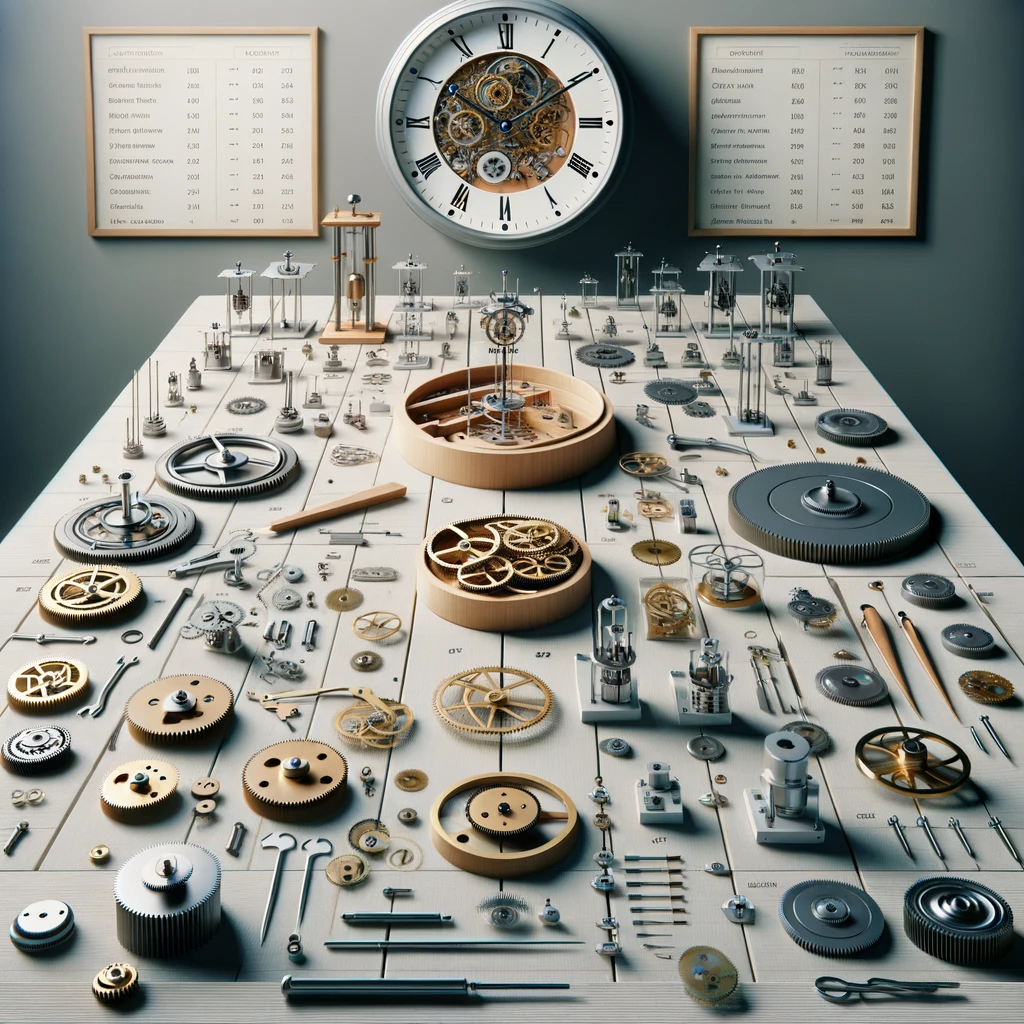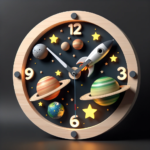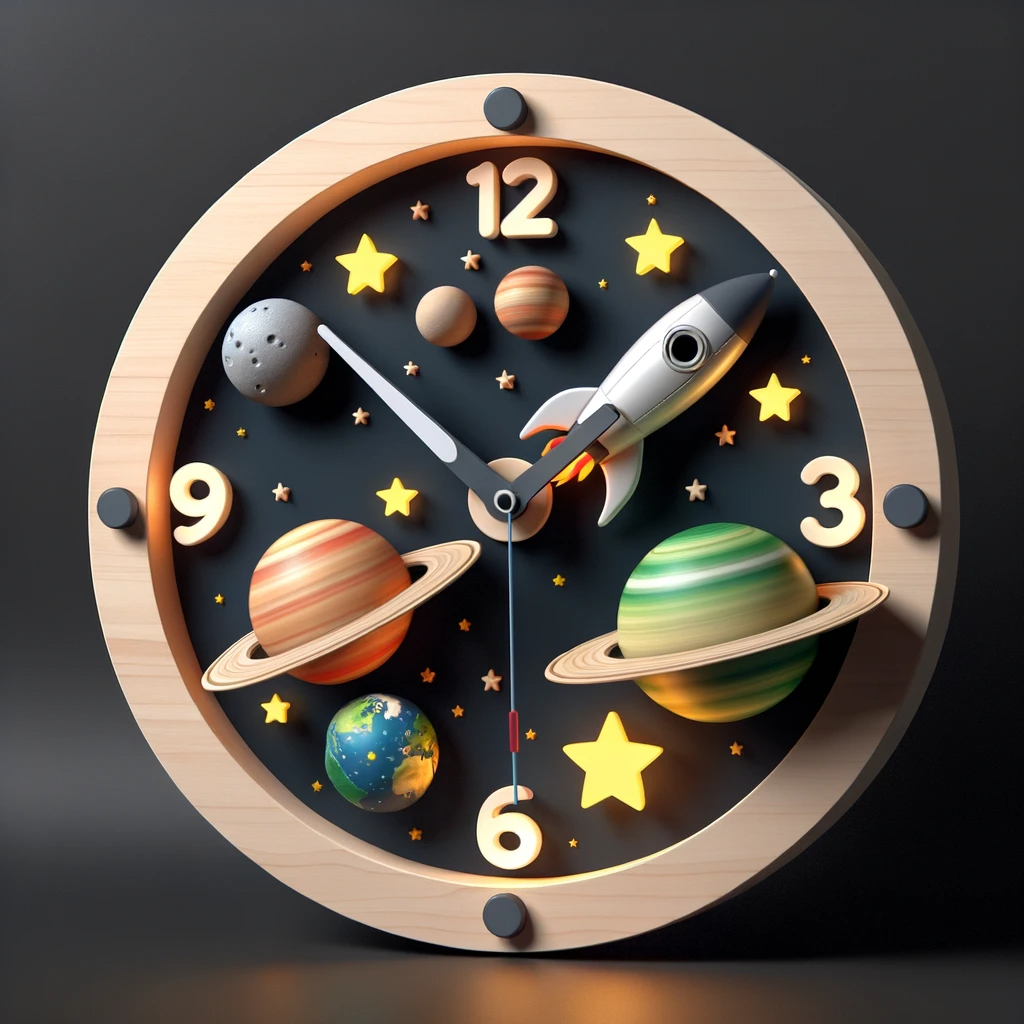Introduction

The importance of clocks in our daily lives cannot be overstated. Clocks serve as crucial timekeeping devices that help us stay organized, manage our schedules, and ensure punctuality.
Without clocks, our lives would lack structure and efficiency. With that said, it is essential to understand the different types of clock movements available: quartz, mechanical, and atomic.
Each type operates on a distinct mechanism and offers unique features and benefits. By gaining an understanding of these three types, we can appreciate the advancements made in timekeeping technology and make informed choices when selecting a clock for our needs.
Importance of Clocks in Our Daily Lives
Clocks play an indispensable role in modern society by providing us with accurate measurements of time. They allow us to synchronize our activities with others, ensuring smooth coordination for social events, work meetings, transportation schedules, and more. Without clocks guiding our actions, chaos would ensue.
Moreover, clocks help us manage our time effectively. They act as reminders for appointments or deadlines, ensuring that we allocate sufficient time for each task or commitment.
By enabling us to track the passing hours and minutes precisely, clocks enhance productivity and promote effective time management skills. In addition to their practical functions, clocks also have symbolic significance.
They serve as visual representations of the passage of time itself—a constant reminder that every moment is fleeting and should be cherished. The rhythmic ticking or sweeping hands remind us to make the most out of each second and embrace every opportunity that arises.
Overview of Different Types of Clock Movements: Quartz Mechanical, and Atomic

Clock movements refer to the mechanisms responsible for keeping time within a clock system. There are three primary types: quartz movement (also known as electronic movement), mechanical movement (commonly found in traditional analog clocks), and atomic movement (utilizing precise atomic resonances). Quartz clock movements are the most prevalent and affordable option in today’s market.
They utilize quartz crystals that vibrate at a precise frequency when an electric current is applied, providing a stable reference for accurate timekeeping. The crystal’s vibrations are converted into electrical signals that drive the clock hands with remarkable precision.
Mechanical clock movements, on the other hand, rely on a complex system of gears and springs to measure time. They make use of an escapement mechanism to regulate the release of energy from a wound-up mainspring, regulating the movement of gears and ultimately driving the clock hands.
Mechanical clocks often evoke a sense of nostalgia and craftsmanship due to their intricate mechanisms. Atomic clock movements represent the pinnacle of timekeeping accuracy.
They utilize principles from atomic physics to measure time based on resonances within atoms or ions—most commonly cesium or rubidium. By detecting these resonances and counting oscillations, atomic clocks achieve unparalleled precision, making them essential for scientific research, telecommunications systems, and global positioning applications.
Understanding the distinctions between quartz, mechanical, and atomic clock movements allows us to appreciate both their historical significance and technological advancements in timekeeping. These three types offer different levels of accuracy, cost-effectiveness, and aesthetic appeal—catering to diverse preferences and requirements in our modern world.
Quartz Clock Movements
The Quartz Crystal’s Role in Timekeeping
Quartz crystal controls time in clocks. Quartz crystals possess piezoelectric properties. Piezoelectricity enables the crystal to vibrate when an electric current is applied.
The vibrations are extremely precise due to the unique molecular structure of quartz. This consistent vibration is a key factor in accurate timekeeping.
How Quartz Crystals Vibrate at a Precise Frequency
Electric current stimulates the quartz crystal to vibrate. The shape and size of the crystal determine its natural resonant frequency. By shaping the crystal differently, manufacturers can achieve particular frequencies, such as 32,768 Hz for most quartz watches.
Operation of a Quartz Clock Movement
A quartz clock movement relies on an integrated circuit to measure time accurately. The integrated circuit contains a small piece of quartz, known as a quartz oscillator or resonator. This oscillator creates electrical pulses with precise frequencies based on the vibration of the quartz crystal.
Quartz Oscillator Circuit and its Components
The quartz oscillator circuit typically includes capacitors and resistors for stability and accuracy control. Capacitors help fine-tune the frequency while resistors regulate power supply voltage.
Integration of Electronic Circuits for Timekeeping Accuracy
Electronic circuits within a quartz clock movement divide these pulses into regular intervals such as seconds, minutes, and hours. These intervals are then used to drive the gears that display time on the clock face or digital display.
Advantages and Disadvantages of Quartz Clock Movements
Advantages:
- Quartz clock movements are inexpensive to produce due to mass production techniques.
- They are widely available in various designs and styles suitable for different settings.
Disadvantages:
- Despite their high accuracy, quartz clock movements have a limited lifespan.
- The quartz crystal’s vibrations may become less reliable over time, affecting timekeeping accuracy.
Mechanical Clock Movements

Historical Background: The Development of Mechanical Clocks
Mechanical clocks have a rich history steeped in ingenuity and innovation. Their development can be traced back to ancient civilizations, but it was during the Middle Ages that significant advancements were made.
The introduction of the mechanical escapement mechanism revolutionized timekeeping by providing a method to regulate the release of energy and ensure accurate timekeeping. This breakthrough allowed for the development of more precise and reliable clocks.
The Evolution from Weight-Driven to Spring-Driven Mechanisms
The early mechanical clocks were driven by weights, relying on gravity to power their movement. These weight-driven mechanisms could be found in tower clocks and large, stationary timepieces.
However, with advancements in technology and miniaturization, clockmakers began experimenting with spring-driven mechanisms during the Renaissance period. Springs offered greater portability and flexibility in clock design, making them ideal for domestic use.
Components and Operation: The Inner Workings of a Mechanical Clock Movement
A mechanical clock movement consists of several essential components that work together to regulate timekeeping accurately. At its heart is the escapement mechanism, which controls the release of energy from either a weight or a wound-up spring.
The escapement mechanism acts as a pendulum swing regulator or balance wheel oscillations coordinator, ensuring that energy is released at regular intervals to maintain consistent timekeeping. The escapement mechanism connects to a gear train system within the clock movement.
This gear train consists of different sized gears arranged in a specific sequence to transmit power from the source (weight or spring) throughout the clock’s internal system. Each gear has its own ratio which determines how fast it rotates based on input power.
Advantages and Disadvantages: Traditional Craftsmanship Appeal, Maintenance Requirements, and Accuracy Issues
One of the main advantages of mechanical clock movements lies in their traditional craftsmanship appeal. The intricate mechanisms, often visible through glass panels or open dials, evoke a sense of nostalgia and appreciation for the artistry involved in their creation.
Mechanical clocks can become cherished heirlooms and are often considered pieces of functional art. However, mechanical clock movements also have their drawbacks.
They require regular maintenance to keep them running smoothly. Lubrication, adjustment, and occasional cleaning are crucial to ensure optimal performance and longevity.
Moreover, mechanical clock movements may face accuracy issues over time due to wear and temperature variations. These factors can affect the precision of timekeeping and may require periodic adjustments by a skilled horologist to maintain accuracy.
Atomic Clock Movements
Exploring the Principles Behind Atomic Clocks
1. Atomic resonance utilizes atoms or ions.
2. Cesium or rubidium are commonly used elements for atomic clocks.
Operation and Technology of Atomic Clocks
1. Cooling techniques are employed to reduce atomic motion.
2. Detection methods are utilized to measure atomic resonance.
Advantages and Limitations of Atomic Clock Movements
Atomic clock movements offer unparalleled accuracy. Atomic clocks represent the pinnacle of timekeeping precision through their utilization of atomic resonance principles and advanced technology.
By harnessing the resonating properties of atoms or ions, such as cesium or rubidium, these clocks achieve incredible accuracy in measuring time.
The operation of atomic clocks involves cooling techniques to minimize atomic motion, while detection methods are employed to measure atomic resonance accurately.
The advantages of atomic clock movements lie in their unparalleled precision, making them indispensable in scientific research, space exploration, and telecommunications systems where precise timing is crucial.
Looking at the bigger picture, the existence and development of such precise timekeeping instruments highlight humanity’s remarkable progress in understanding and harnessing fundamental physical phenomena. With each advancement in clock technology, we gain a deeper appreciation for our place within the universe and our ability to unravel its complex workings.
By pushing the boundaries of what is possible in time measurement, we not only improve our scientific endeavors but also enhance everyday life through synchronized communication networks and precise navigation systems.
This constant pursuit of accuracy underscores our unwavering commitment to progress and innovation, leaving us optimistic about what lies ahead in our quest for greater understanding and mastery over time itself.









